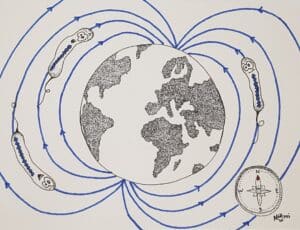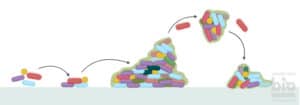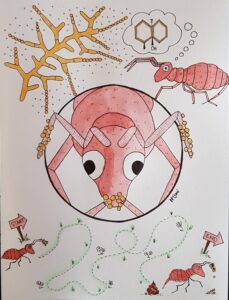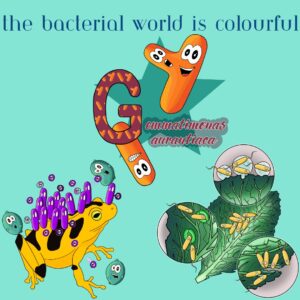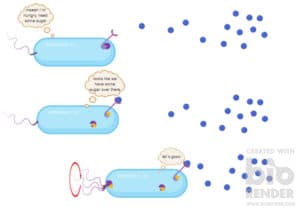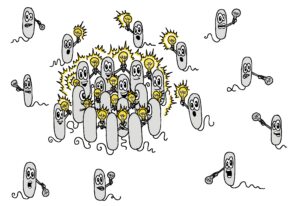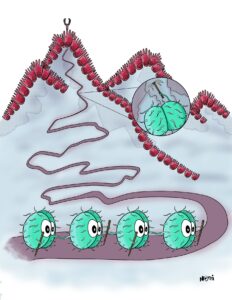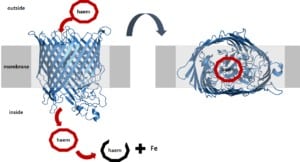I talked a lot already about how bacteria sense their changing environment. And yet, at times the simplicity and efficiency of how bacteria know what is going on around them blows my mind.
When you look at a bacterium, you see that it has no eyes to see, no ears to hear and no nose to smell. So, how do bacteria know where they are and what is happening around them?
Bacteria use some simple but highly efficient systems to make sense of their environment. Here, we will look at two of these systems.
Bacteria use complex systems to sense their environment
When we talk of the environment of a bacterium, we mean any kind of condition that a bacterium might encounter in its daily life. This includes temperature, pH, presence or absence of a nutrient, oxygen levels or the presence of certain antibiotics…
And bacteria need to know about the state of these conditions. They need to know how warm or cold it is, where the food is or if they are close to deadly antibiotics. Once they sensed this condition as a so-called signal, they need to respond to it.
This is why scientists called these systems response regulator systems. Bacteria use them to regulate their response to a specific signal.
The one-component system
The simplest of these systems is the ‘one component system‘ as this includes only one protein. This protein has two parts, or modules. One module is the sensor module (bright green in the picture below) which senses or measures a certain signal within the cell. The second module is the response module (dark green) which responds in a specific way to the measured signal.
The two modules are in close contact with each other. Thus, the response module knows exactly what the sensory module measures and how it is supposed to react.
In most cases, the sensory module measures the presence or absence of a certain molecule, for example, oxygen or iron. This happens because the sensory module has a very high binding affinity for this molecule.
For example, if oxygen is present within the bacterial cell, it binds to the sensory module. When oxygen is not bound to the sensory module, it has a slightly different structure. In this case, the response module reacts by binding to another response module of another one-component system.
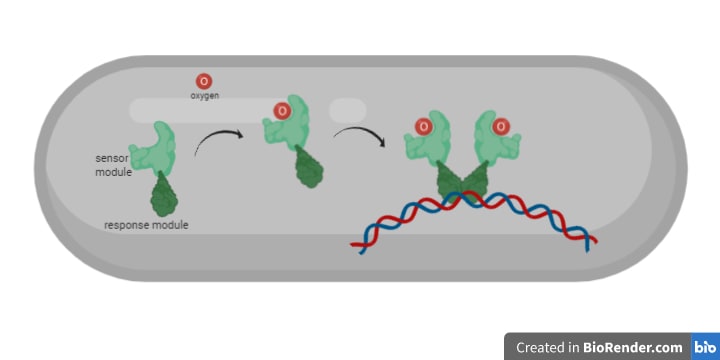
Now, this double protein can bind to bacterial DNA at specific positions. It binds right next to a certain gene to turn this gene on so it can produce specific proteins. These proteins will now help the cell deal with the lack of oxygen.
Like this, the response module ensures that the cell gets the right set of proteins that are needed in this specific situation.
Okay, but this system only measures conditions within the cell. How does a bacterium know what is going on on the outside?
The two-component system
In this case, the sensory module and the response module are located within two separate proteins. These are the sensor protein and the response protein. Since two proteins are involved in this system, scientists call it the ‘two-component system‘.
Here, the sensor protein has two parts or modules and sits in the bacterial cell membrane. The sensor module is similar to the module in the ‘one-component system’ that we discussed above. The second module has an enzymatic activity (orange in the figure below).
The response protein also has two modules and lives inside the bacterial cell. The receiver module (red) waits for specific interactions with the sensor protein. Interestingly, the second module, the response module, is the same as in the ‘one-component systems’.
Two-component systems sense signals in the environment
Because the sensor module sits in the bacterial cell membrane, it can sense signals inside or close to the membrane. For example, certain antibiotics damage the cell membrane. Bacteria measure or sense such membrane damage with specific sensory modules.
Other sensory modules can measure the temperature within a bacterium. The membranes of bacteria are made of fatty acids and you know how the consistency of fat changes when the temperature changes? Similarly, with rising temperatures, the membrane becomes more fluid. On the contrary, at low temperatures, it is more rigid. Interestingly, sensory modules act like thermometers and measure the fluidity of the cell membrane.
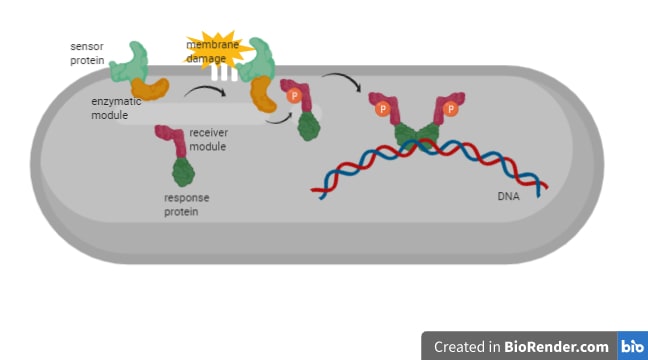
Once a certain signal activates the sensor module in the membrane, its enzymatic module also gets activated. The enzymatic module can then interact with the receiver module from the response protein and adds a little molecule (P) to the receiver.
This addition changes the structure of the response protein. Now, the response module can bind to another response module, similar to what happens in the ‘one-component system’.
Hence, the response itself is similar. Bacteria produce proteins that cope with the detected signal. One example is dealing with changing temperature or getting rid of antibiotics.
The two-component system is also part of the chemotaxis system which controls the movement of bacteria towards nutrients.
Bacteria know how to adapt to the changing environment
In all, bacteria found amazingly simple but efficient ways to sense and know what is going on in their environment. Using these systems, they know exactly how to deal with the changes based on the information they receive. This simple trait, in my opinion, makes them super smart.
Takeaway message from this article
- Bacteria sense their environment and couple it directly to a specific response
- Signals can derive from within the bacterium or outside of the cell
- The response helps the bacterium to adapt to the new environmental conditions


